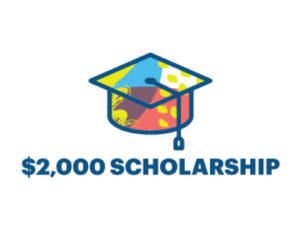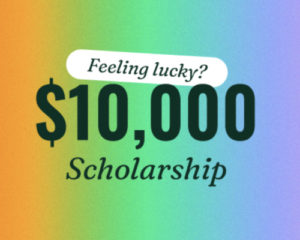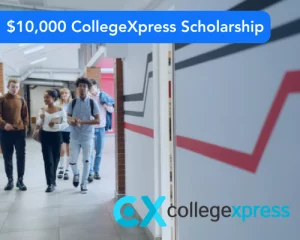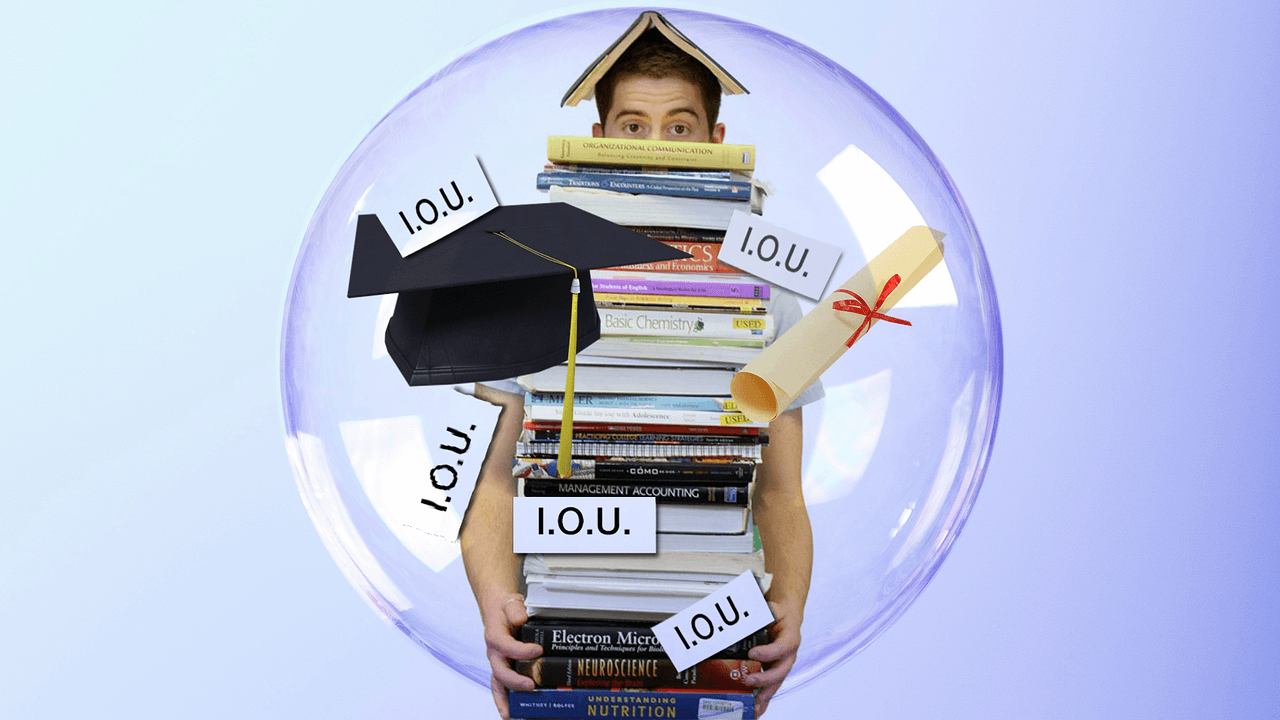Student-centric advice and objective recommendations
Higher education has never been more confusing or expensive. Our goal is to help you navigate the very big decisions related to higher ed with objective information and expert advice. Each piece of content on the site is original, based on extensive research, and reviewed by multiple editors, including a subject matter expert. This ensures that all of our content is up-to-date, useful, accurate, and thorough.
Our reviews and recommendations are based on extensive research, testing, and feedback. We may receive commission from links on our website, but that doesn’t affect our editors’ opinions. Our marketing partners don’t review, approve or endorse our editorial content. It’s accurate to the best of our knowledge when posted. You can find a complete list of our partners here.
Federal Stafford Loans: Everything You Need to Know
 By
Will Geiger
By
Will Geiger 
Will Geiger is the co-founder of Scholarships360 and has a decade of experience in college admissions and financial aid. He is a former Senior Assistant Director of Admissions at Kenyon College where he personally reviewed 10,000 admissions applications and essays. Will also managed the Kenyon College merit scholarship program and served on the financial aid appeals committee. He has also worked as an Associate Director of College Counseling at a high school in New Haven, Connecticut. Will earned his master’s in education from the University of Pennsylvania and received his undergraduate degree in history from Wake Forest University.
Full BioLearn about our editorial policies

Annie has spent the past 18+ years educating students about college admissions opportunities and coaching them through building a financial aid package. She has worked in college access and college admissions for the Tennessee Higher Education Commission/Tennessee Student Assistance Corporation, Middle Tennessee State University, and Austin Peay State University.
Full BioLearn about our editorial policies

Federal Stafford Loans are a type of student loan offered by the U.S. Federal Government. These student loans are oftentimes referred to as Direct Loans or Direct Stafford Loans and are available to students pursuing higher education at four year universities and colleges, community colleges, as well as trade, career, or technical schools.
If you are applying for student loans or have student loans, chances are that you have encountered the Stafford Loan program. In this guide, we’ll be breaking down the Stafford Loan program so you know everything you need to know!
- Unsubsidized vs. Subsidized Stafford Loans
- Direct Loan Eligibility
- Stafford Loan Deadlines
- Direct Stafford Loan Borrowing Limits
- Federal Stafford Loan Interest Rates
- How to repay your federal Stafford Loans
Unsubsidized vs. Subsidized Stafford Loans
Stafford Loans actually come in two different types: Unsubsidized Stafford Loans and Subsidized Stafford Loans:
Subsidized Stafford Loans
When you have a Subsidized Stafford Loans, the federal government will pay the interest on your loans for you while you are enrolled in school, when your student loans are in deferment, and in the six months after you graduate. So as long as you are in school and taking at least 12 credit hours, all of the student loan interest will be paid by the government. None will accrue for you to pay off and your amount owed will remain the same as the initial amount you borrowed.
So, when you begin repayment, you will only be responsible for the amount you initially borrowed, plus any interest that accrues once you begin repayment.
Unsubsidized Stafford Loans
Unsubsidized Student Loans do not enjoy the same treatment, and your interest will immediately start to accumulate when you are in school. This is the main reason why Subsidized Direct Stafford Loans are preferable to Unsubsidized Direct Stafford Loans.
If you are a prospective graduate student, note that you will only be able to access Direct Unsubsidized Student Loans as the Subsidized loans are only available for undergraduates.
Go deeper: Subsidized vs. Unsubsidized Student Loans: What you need to know
Benefits of Stafford Loans
Stafford Loans are among the best, if not the best loans you can take out as a student. Their interest rates are typically lower than any other federal loans and anything you could find on the private loan market. What’s more, they come with a host of ways to help ensure that borrowers can pay them back without facing financial difficulty. Here are a couple of the benefits of Stafford Loans. It should be noted that these benefits apply to all federal loans, not just Stafford.
Flexible repayment
One of the best parts of Stafford Loans – and this is true of all federal loans – is that they are eligible for a robust set of flexible repayment plans. These include PAYE and REPAYE and income-driven repayment plans.
If you find yourself struggling to find a high-paying job after graduation, these plans allow you to lower your monthly payments in order to make them affordable. Instead of a fixed payment, they will be set based on your income and prevent you from falling behind on your payments.
Don’t miss: How to recertify your income-driven repayment plan
Paused during national emergencies
When the pandemic struck in 2020, many people were left in precarious financial situations. The last thing they needed was the added stress of student loan payments. Luckily, the government automatically paused all federal student loan repayments and began to pay for the interest accruing on everyone’s existing loans.
Private loan borrowers, however, did not benefit from this policy decision. Each loan servicer got to decide how to handle payments during the pandemic, and their policies were generally far less generous than the government’s.
So, if another emergency were to strike, you might find yourself very content having taken out federal loans rather than private. As a federal borrower, your lender has more of your interest in mind than a purely private entity.
Deferrable for grad school or other approved reasons
If you decide to go back to school or undergo a life change that makes it difficult to make loan payments for a set amount of time, federal loans are much more flexible than private loans. As long as you qualify for deferment, you can pause your payments with no penalties to your credit score or the amount owed. Subsidized Stafford Loans will even pause the interest on the loan during the period of deferment, whereas Unsubsidized Stafford Loans will accrue interest but incur no other penalties.
Eligible for federal loan forgiveness
If you plan on going into a public service field, such as teaching, working as a medical professional, joining the military, or becoming a first responder, you may be eligible for federal loan forgiveness programs down the line. These could wipe your debts clean after ten years of payments.
However, these programs only apply to federal loans; if you’ve taken out private loans, you cannot qualify for any federal forgiveness. So, make sure to weigh this if you foresee yourself joining a qualifying field of work.
Also see: Guide to loan forgiveness programs
Direct Loan eligibility
Direct Loan eligibility require two main things from students:
- Students must be enrolled in higher education that will lead to a degree or certificate
- Students must complete and submit the Free Application for Federal Student Aid or FAFSA
Once you are accepted to a college, you will receive a financial aid award letter outlining your various options for paying for college (including any Direct federal student loans).
Subsidized Direct Loan eligibility
If your Student Aid Report only includes Unsubsidized Stafford Loans, your SAI was too large to qualify for a Subsidized Stafford Loan.
Unsubsidized student loans have no financial need requirement; so as long as you submit your FAFSA and have been accepted into college, you should be good to go.
Apply to these scholarships due soon
Stafford Loan deadlines
There is no deadline to apply for the Stafford Loans. You’ll just want to make sure your FAFSA has been completed by the college deadline. It is essential that you submit your FAFSA by the deadline (and remember the FAFSA opens up on October 1st each year, which gives you many months to finish the application).
Direct Stafford Loan borrowing limits
One of the most common questions students ask about Stafford Loans is “how much money can I get?”
The answer to this question depends on a variety of factors. For example, independent students can take out more money than dependent students. Additionally, as they progress through school, students gain the ability to take out more in loans each year. Additionally, whether the sum you borrow is in Subsidized Loans or Unsubsidized Loans depends on your financial need.
Let’s get into what this all means. We’ll start with a chart that shows you the total amount of money you can take out every year if you are a dependent student. We’ll show you the total amount you can withdraw, as well as the amount of that sum that can be in Subsidized loans (assuming you qualify for them financially).
Dependent students in undergraduate studies
| Academic Year | Stafford Direct Loan Amount |
| First year | $5,500 total, including a maximum of $3,500 in Subsidized Loans |
| Second year | $6,500 total, including a maximum of $4,500 in Subsidized Loans |
| Third year (and beyond) | $7,500 total, including a maximum of $5,500 in Subsidized Loans |
Independent students in undergraduate studies
| Academic Year | Unsubsidized Direct Loan Amount |
| First year | $9,500 total, including a maximum of $3,500 in Subsidized Loans |
| Second year | $10,500 total, including a maximum of $4,500 in Subsidized Loans |
| Third year (and beyond) | $12,500 total, including a maximum of $5,500 in Subsidized Loans |
Stafford Loans for graduate students
Graduate students have a different set of options when it comes to Stafford Loans. While they do not qualify for Subsidized Stafford Loans, they can take out Unsubsidized ones with a much higher limit than undergrads. In fact, they can take out up to $20,500 per year. While these loans have less favorable terms than Subsidized loans, they are still some of the best loans available.
Graduate students should turn to Stafford Loans for funding before they look at any other options, due to the flexible repayment options, low interest rate, and eligibility for loan forgiveness.
How to qualify for additional loan dollars
Generally, the next loan option after Direct Loans are Parent PLUS loans. However, if your parents do not qualify for these loans, you may be eligible to receive additional unsubsidized loans from the U.S. Department of Education. Students should be sure to talk to their college’s financial aid office for more information if they didn’t qualify for the PLUS loan.
Federal Stafford Loan interest rates for 2024-2025 academic year
| Interest Rate | |
| Undergraduate (both subsidized and unsubsidized Direct Loans) | 6.53% |
| Graduate (unsubsidized Direct Loans) | 8.08% |
Stafford Loan interests rates are set by the federal government each year on June 1st. The current interest rates for Direct Stafford Loans are:
How to repay your Federal Stafford Loans
One of the major benefits of taking out a Federal Stafford Loan is the variety of repayment options. Different repayment plans have different pros and cons depending on your financial situation, goals, and whether or not you have private loans. We recommend a student research their repayment options to pick the best plan for them. You can also apply for grants to help repay your loans. Remember, always apply for all the scholarships you qualify for as well!
Keep reading: Navigating different types of student loans
Frequently asked questions about Federal Stafford Loans
What is the difference between subsidized and unsubsidized Stafford loans?
How do I apply for a Federal Stafford Loan?
When do I have to start repaying my Stafford Loan?
How can I keep track of my Stafford loan balance?














